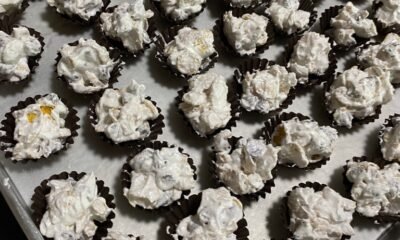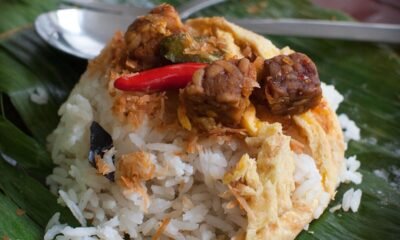Product
Uncle Sam Hat A Symbol of American Patriotism

The Uncle Sam hat is one of the most recognizable symbols of American identity and patriotism. With its bold design featuring red and white stripes and a blue band adorned with white stars, the hat is synonymous with the larger-than-life figure of Uncle Sam, a personification of the United States. This article explores the history, symbolism, and cultural significance of the Uncle Sam hat, tracing its journey from its origins to its enduring place in American culture.
The Origins of Uncle Sam and His Iconic Hat
The character of Uncle Sam dates back to the early 19th century, believed to have been inspired by Samuel Wilson, a meat packer from New York who supplied rations to soldiers during the War of 1812. The barrels of food were stamped with “U.S.” to indicate government property, which soldiers began referring to as coming from “Uncle Sam.” Over time, this nickname evolved into a symbol of the United States itself.
While Uncle Sam became a national symbol, his iconic hat emerged much later as a defining visual element of his character. The hat’s design, featuring the American flag’s colors and motifs, began appearing in political cartoons and illustrations during the mid-19th century, symbolizing the federal government and American ideals.
Design and Symbolism of the Uncle Sam Hat
The Uncle Sam hat is unmistakably patriotic, with its bold and simple design:
- Red and White Stripes: Represent the 13 original colonies of the United States.
- Blue Band with White Stars: Symbolizes the union of states in the nation.
- Tall, Cylindrical Shape: Gives Uncle Sam a commanding and authoritative presence, reflecting the power and stature of the U.S. government.
The hat is often paired with Uncle Sam’s long-tailed coat, bow tie, and pointed finger in recruitment posters or political propaganda, reinforcing its connection to national pride and responsibility.
The Uncle Sam Hat in American Culture
The Uncle Sam hat has become a staple of American visual culture, appearing in various contexts:
1. Political Campaigns and Propaganda
The hat gained widespread recognition during World War I through James Montgomery Flagg’s famous 1917 recruitment poster that declared, “I Want YOU for U.S. Army.” Uncle Sam’s authoritative pose, pointing directly at the viewer while wearing his signature hat, encouraged enlistment and patriotism.
2. National Celebrations
The hat is a popular accessory during patriotic holidays like the Fourth of July, Memorial Day, and Veterans Day. Its bold design is frequently seen on parade floats, costumes, and decorations, embodying the spirit of celebration and unity.
3. Commercial and Pop Culture References
Beyond its historical use, the Uncle Sam hat is often featured in advertisements, cartoons, and parodies as a symbol of American pride or satire. It has become shorthand for representing the federal government or American values in popular media.
4. Educational and Historical Contexts
The hat is frequently used in classrooms, museums, and historical reenactments to teach about U.S. history, particularly the role of propaganda in shaping national identity.
Cultural and Political Interpretations
While the Uncle Sam hat is predominantly seen as a symbol of patriotism, its meaning can vary depending on the context:
- Patriotism and Unity: For many, the hat represents national pride, unity, and the ideals of democracy and freedom.
- Government Authority: In political discourse, the hat is often used to symbolize federal authority or intervention.
- Satirical Commentary: In satirical works, the hat can represent critique or mockery of political decisions, national policies, or cultural attitudes.
The Legacy of the Uncle Sam Hat
The UncleSam hat remains an enduring emblem of American identity. Its simplicity and boldness have allowed it to transcend time, adapting to new cultural contexts while retaining its core message of patriotism. Whether worn during Independence Day celebrations, used in educational settings, or displayed in political commentary, the Uncle Sam hat continues to inspire and evoke a sense of national pride.
How to Incorporate the Uncle Sam Hat Today
The UncleSam hat is more than just a historical artifact; it’s a fun and meaningful way to celebrate American culture. Here are some ideas for incorporating the hat into modern events:
- Costumes: Wear it as part of a patriotic outfit during parades or festivals.
- Decorations: Use miniature versions as table centerpieces for patriotic-themed parties.
- Educational Activities: Include the hat in lessons about U.S. history to engage students visually.
Conclusion
The UncleSam hat is more than just a piece of headwear—it’s a symbol of American history, unity, and patriotism. From its origins in political propaganda to its modern-day use in celebrations and media, the hat continues to capture the essence of the United States. By understanding its historical significance and cultural impact, we can appreciate how this iconic hat has come to represent the ideals and identity of a nation.
FAQs
What does the Uncle Sam hat symbolize?
The Uncle Sam hat symbolizes American patriotism, unity, and the values of democracy and freedom. Its design reflects elements of the U.S. flag, representing the nation’s heritage.
When did UncleSam start wearing the hat?
Uncle Sam’s iconic hat became a defining feature in the mid-19th century through political cartoons and illustrations, gaining widespread recognition during World War I.
Why is the UncleSam hat so tall?
The tall, cylindrical shape of the Uncle Sam hat emphasizes authority and prominence, reflecting the power and stature of the U.S. government.
Where is the UncleSam hat commonly seen today?
The hat is commonly seen during patriotic holidays, in educational materials, and in political or satirical media as a representation of the United States.
How can I use the UncleSam hat in celebrations?
The hat can be worn as part of a costume, used as a decoration, or included in historical reenactments to celebrate American culture and history.
Is the UncleSam hat still relevant?
Yes, the UncleSam hat remains a timeless symbol of American identity, adapting to modern contexts while retaining its core message of patriotism and unity.
BLOGS
Blue Agate Properties, Benefits, and Uses Explained

Blue agate, with its enchanting hues and intricate patterns, is more than just a pretty stone. It’s a gemstone revered for its calming energy, emotional healing properties, and spiritual significance. Whether you’re drawn to its visual appeal or its metaphysical attributes, blue agate has something special to offer. Let’s delve deeper into the world of this captivating stone.
What Is Blue Agate?
Blue agate is a variety of chalcedony, a mineral in the quartz family, characterized by its layered bands of soft blue tones. These bands often include white or translucent layers, creating a stunning, ethereal appearance. This gemstone forms naturally over millions of years, making each piece truly unique.
Origins and History of Blue Agate
Blue agate has a rich history that dates back to ancient civilizations. The stone was believed to hold protective and healing properties, often used in amulets and talismans. Early records show its use in Mesopotamian and Egyptian cultures for spiritual ceremonies and as a symbol of divine connection.
Today, blue agate is sourced from various regions, including:
- Brazil: Known for producing high-quality agates.
- Botswana: Famous for its uniquely patterned stones.
- India and Madagascar: Other significant sources of blue agate.
Physical Properties of Blue agate
Blue agate is a unique and captivating gemstone, celebrated for its serene beauty and intricate natural patterns. Its physical properties not only define its visual appeal but also make it a durable and versatile choice for various applications. Here’s a detailed look at the physical characteristics that make blue agate so special:
Color
The defining feature of blue agate is its soft, tranquil shades of blue, often interspersed with:
- White or Translucent Bands: Creating a layered, ethereal appearance.
- Subtle Variations: Ranging from pale sky blue to deeper, almost aqua tones.
This color spectrum gives blue agate its calming and soothing aesthetic, making it a favorite for both decorative and spiritual purposes.
Transparency
Blue agate ranges from semi-translucent to opaque, depending on its formation and mineral content. This variability adds depth and dimension to its appearance, particularly when polished or cut into slices.
Hardness
With a hardness rating of 6.5–7 on the Mohs scale, blue agate is:
- Durable: Resistant to scratches and everyday wear.
- Versatile: Suitable for jewelry, ornamental pieces, and practical tools like coasters or bookends.
Lustre
Blue agate possesses a waxy to vitreous (glassy) lustre when polished. This shiny surface enhances the stone’s natural beauty, emphasizing its bands and intricate details.
Density
The stone has a density of approximately 2.6–2.7 g/cm³, making it relatively lightweight for its size. This characteristic contributes to its practicality in jewelry and other wearable forms.
Structure and Composition
Blue agate belongs to the chalcedony family, a microcrystalline form of quartz. Its structure is composed of fine intergrowths of silica minerals, giving it:
- Toughness: The stone is resistant to breaking or chipping.
- Unique Patterns: Its layered structure creates the characteristic banding seen in blue agate.
Formation
Blue agate forms over millions of years through the slow deposition of silica in volcanic cavities. This process creates its distinct bands and ensures that no two pieces are identical.
Metaphysical Properties of Blue Agate
Blue agate is celebrated for its metaphysical properties, providing both emotional and spiritual benefits:
- Calming Energy: Reduces stress and promotes relaxation.
- Communication Aid: Enhances clarity in self-expression and helps resolve conflicts.
- Emotional Healing: Assists in overcoming past trauma and fostering a sense of inner peace.
This stone is often associated with the throat chakra, which governs communication and self-expression.
Blue Agate in Healing Practices
Blue agate is a cornerstone in crystal healing practices due to its gentle yet effective energy:
- Physical Healing: Believed to alleviate throat-related ailments, regulate hormones, and improve circulation.
- Emotional Healing: Supports overcoming fear, anxiety, and feelings of isolation.
- Spiritual Healing: Strengthens intuition and aids in meditation, enhancing the connection with higher realms.
Uses of Blue Agate
Blue agate is a versatile stone with applications ranging from wellness to aesthetics:
- Jewelry: Worn as necklaces, bracelets, or earrings for personal energy alignment.
- Home Decor: Used in coasters, bookends, and decorative pieces to infuse spaces with calm energy.
- Meditation Tools: Incorporated into meditation practices for focus and spiritual growth.
How to Use Blue Agate in Daily Life
To harness the benefits of blue agate, try these simple practices:
- Wear It: Keep the stone close to your throat chakra by wearing it as a pendant or choker.
- Carry It: Place a small piece in your pocket or bag to carry its calming energy throughout the day.
- Display It: Position the stone in your living or workspace to promote a serene environment.
Blue Agate in Feng Shui
In Feng Shui, blue agate is used to create a harmonious atmosphere by balancing the energy of a space:
- Placement: Ideal for areas where you seek peace, such as bedrooms or meditation rooms.
- Element: Associated with the water element, representing flow, communication, and clarity.
How to Cleanse and Charge Blue Agate
To maintain the energetic properties of blue agate, regular cleansing and recharging are essential:
- Cleansing: Rinse under lukewarm water or smudge with sage.
- Charging: Place in sunlight for a few hours or under the light of the full moon.
This ensures your stone remains vibrant and energetically potent.
Blue Agate vs. Other Agates
Blue agate stands out among other types of agates due to its distinct appearance and specific energy:
| Feature | Blue Agate | Other Agates |
|---|---|---|
| Color | Soft blue with bands | Varied (red, brown, etc.) |
| Energy | Calming and communicative | Grounding or protective |
| Uses | Emotional healing, throat chakra | Root chakra, heart chakra |
How to Identify Genuine Blue Agate
When purchasing blue agate, ensure authenticity by considering the following:
- Visual Inspection: Look for natural banding and a smooth polish.
- Reputable Sellers: Buy from trusted gemstone dealers.
- Price Check: Authentic blue agate is moderately priced; too low may indicate a fake.
FAQs
What are the benefits of blue agate?
Blue agate promotes emotional healing, enhances communication, and brings calming energy to its wearer.
Can blue agate be worn daily?
Yes, its durable nature and soothing energy make it suitable for daily wear.
Is blue agate safe to cleanse with water?
Yes, but avoid prolonged soaking to preserve its natural beauty.
How does blue agate support meditation?
By calming the mind and enhancing intuition, blue agate helps deepen meditative practices.
Can blue agate improve communication skills?
Yes, as it resonates with the throat chakra, it can aid in clear and confident expression.
Where can I buy authentic blue agate?
Reputable online stores, gemstone boutiques, and certified dealers offer authentic blue agate.
Conclusion
Blue agate is a gem of tranquility, offering both aesthetic beauty and profound emotional support. Its calming energy, combined with its rich history and diverse applications, makes it a must-have for gemstone enthusiasts and wellness seekers alike. Whether you wear it, meditate with it, or use it to enhance your living space, blue agate’s soothing presence can bring harmony and balance to your life.
Health & Fitness
Hunter Green Scrubs for Healthcare Professionals

Hunter green scrubs have emerged as a timeless choice in healthcare attire, offering a harmonious blend of professionalism, comfort, and style. With their rich, earthy tone, these scrubs not only provide a calming effect in high-pressure environments but also exude sophistication.
Let’s dive deep into the world of hunter green scrubs, their benefits, styling tips, and how they can enhance your professional wardrobe.
Why Choose Hunter Green Scrubs?
Hunter green is more than just a color—it’s a statement of reliability and calmness. In a field where first impressions matter, these scrubs convey a sense of trustworthiness and competence. Beyond aesthetics, hunter green scrubs are practical for the demands of healthcare environments, offering stain concealment and versatility.
The Psychology Behind Hunter Green
The color green symbolizes balance, harmony, and renewal, which are essential in healthcare settings. Hunter green, being a darker shade, is associated with stability and depth. This color choice helps soothe patients and fosters a sense of well-being, making it a preferred option for professionals working in hospitals, clinics, and other medical facilities.
Material Choices for Comfort and Durability
When selecting hunter green scrubs, material plays a pivotal role. The most common fabric options include:
- Cotton: Breathable and soft, offering all-day comfort.
- Polyester Blends: Wrinkle-resistant and durable, perfect for long shifts.
- Spandex Blends: Provides stretch and flexibility for active professionals.
Choosing the right material ensures that your scrubs remain functional and comfortable throughout your workday.
Styles of Hunter Green Scrubs
Hunter green scrubs are available in a variety of styles designed to cater to the diverse needs of healthcare professionals. Whether you prioritize functionality, comfort, or fashion, there’s a style that will suit your preferences while maintaining a polished and professional appearance. Here’s a closer look at some of the most popular styles of hunter green scrubs:
Classic V-Neck Tops
The V-neck scrub top is a staple in medical attire. Its simple and timeless design makes it a favorite among professionals across various healthcare settings. V-neck tops in hunter green offer:
- Universal Appeal: A flattering cut for all body shapes.
- Functional Pockets: Essential for carrying tools like pens, notepads, or gloves.
- Breathable Fit: Ensures comfort during long shifts.
Mock Wrap Tops
Mock wrap tops add a touch of style while preserving professionalism. These tops mimic the look of a wrap blouse but come without the hassle of tying.
- Elegant Silhouette: Offers a more tailored and feminine look.
- Adjustable Features: Many designs include side-ties or elastic for a customizable fit.
- Practical Design: Often features deep pockets for added utility.
Polo-Style Scrub Tops
For those who prefer a more casual yet polished appearance, polo-style scrub tops are an excellent choice.
- Collared Design: Adds a semi-formal touch to the traditional scrub.
- Button-Up Neckline: Allows for adjustable ventilation.
- Professional Aesthetic: Ideal for roles requiring frequent interaction with patients or visitors.
Sleeve-Length Variations
Scrub tops also come in different sleeve lengths to suit various preferences and workplace climates:
- Short-Sleeve Tops: Ideal for warm environments or high-activity roles.
- Long-Sleeve Tops: Provide extra coverage and warmth in cooler settings.
- 3/4 Sleeve Tops: A versatile option that balances coverage and comfort.
Jogger Pants
Jogger-style scrub pants bring modern athleisure trends into the healthcare world. These pants are both functional and stylish, featuring:
- Tapered Fit: Provides a sleek, contemporary look.
- Elastic Cuffs: Prevent pant legs from dragging on the floor.
- Stretchable Waistbands: Ensures a secure and comfortable fit.
Straight-Leg Pants
A traditional choice, straight-leg scrub pants are a go-to for many professionals.
- Clean Lines: Offer a classic and professional appearance.
- Roomy Design: Provides comfort and ease of movement.
- Adjustable Waistbands: Many include drawstrings or elastic for the perfect fit.
Cargo Pants
For those who require additional storage, cargo scrub pants are a practical option.
- Multiple Pockets: Ideal for carrying small medical tools or personal items.
- Durable Construction: Designed to withstand the demands of busy work environments.
- Versatility: Pairs well with any scrub top style.
Unisex Styles
Unisex scrubs are tailored to suit both men and women, making them a flexible option for teams or individuals:
- Relaxed Fit: Accommodates various body shapes.
- Neutral Design: Appeals to a broad range of style preferences.
- Affordable Options: Commonly available at budget-friendly prices.
Maternity Scrubs
For healthcare professionals who are expecting, maternity scrubs in hunter green provide both comfort and adaptability:
- Stretch Panels: Accommodate growing bellies with ease.
- Soft Fabrics: Prioritize comfort during long shifts.
- Adjustable Features: Include elastic waists or side ties for a perfect fit.
Petite and Tall Fits
Hunter green scrubs are available in petite and tall fits to ensure every professional finds the right length and proportions:
- Petite Options: Shorter inseams and adjusted proportions for smaller frames.
- Tall Options: Longer inseams and adjusted designs for taller individuals.
Best Brands Offering Hunter Green Scrubs
Several brands specialize in creating high-quality hunter green scrubs, including:
- Figs: Known for their luxurious fabric and modern designs.
- Cherokee: Offers affordability without compromising on quality.
- Grey’s Anatomy by Barco: Renowned for their stylish and durable options.
- Dickies: Combines functionality with budget-friendly pricing.
Each brand caters to different needs, ensuring there’s something for every healthcare professional.
How to Accessorize Hunter Green Scrubs
Accessories can elevate the look of your scrubs while ensuring functionality:
- Compression Socks: Choose neutral or complementary shades for added comfort and style.
- Badge Reels: Opt for minimalist designs or fun patterns to express personality.
- Lab Coats: A crisp white lab coat pairs seamlessly with hunter green scrubs.
- Comfortable Footwear: Supportive clogs or sneakers in neutral colors complete the ensemble.
These additions strike a balance between practicality and personal flair.
Caring for Your Hunter Green Scrubs
Maintaining the vibrant hue and durability of your scrubs requires proper care:
- Washing Tips: Use cold water and mild detergent to preserve the color.
- Drying Advice: Air-dry or use low heat settings to prevent fading.
- Stain Removal: Pre-treat stains with gentle cleaners immediately after use.
Following these steps ensures your scrubs remain fresh and professional-looking.
Where to Buy Hunter Green Scrubs
Finding the perfect pair of hunter green scrubs is easier than ever, thanks to a variety of options:
- Online Retailers: Platforms like Amazon, Scrubs & Beyond, and Uniform Advantage offer a wide selection.
- Brick-and-Mortar Stores: Visit local uniform shops for personalized fittings and in-store discounts.
- Brand Websites: Direct purchases often come with exclusive deals and custom sizing options.
Sustainability and Hunter Green Scrubs
Many brands are now incorporating sustainable practices in their production of scrubs. Look for labels that use organic cotton or recycled materials, ensuring your purchase supports eco-friendly initiatives while meeting professional needs.
FAQs
What makes hunter green scrubs a popular choice?
Hunter green scrubs are favored for their professional appearance, ability to conceal stains, and calming psychological impact.
Are hunter green scrubs suitable for all healthcare settings?
Yes, the neutral tone of hunter green makes it appropriate for hospitals, clinics, and private practices.
How do I choose the right size for my hunter green scrub?
Refer to the brand’s sizing chart and consider trying on different fits to find the perfect match for your body type.
What accessories go well with hunter green scrub?
Neutral-toned footwear, white lab coats, and simple badge reels are great accessories for hunter green scrub.
Can I personalize my hunter green scrub?
Yes, many retailers offer embroidery services for adding names, roles, or logos.
How can I ensure my scrubs last longer?
Wash with care, avoid harsh chemicals, and store them properly to maintain their quality.
Product
P87 Stores Brick the Retail Experience
-

 Technology1 month ago
Technology1 month agointernet chicks: A Digital Phenomenon
-

 Recipes10 months ago
Recipes10 months agoCrab Brulee Recipe: A Gourmet Delight
-

 Recipes10 months ago
Recipes10 months agoSmoothie CCL: A Delicious and Nutritious Trend
-

 FOOD1 month ago
FOOD1 month agoÇeciir: A Journey Through Turkish Cuisine
-

 FOOD10 months ago
FOOD10 months agoCornflake Meringue Cookies
-

 FOOD10 months ago
FOOD10 months agoNasi Uduk
-

 Recipes9 months ago
Recipes9 months agoThe Ultimate Bug Juice Camp Drink Recipe for Fun and Flavor
-

 BLOGS10 months ago
BLOGS10 months agoUnveiling the Innovation: BoltBól – Revolutionizing Accessibility and Mobility

